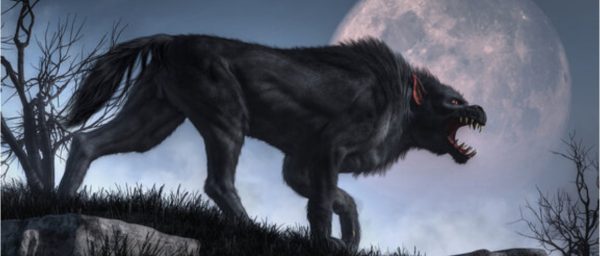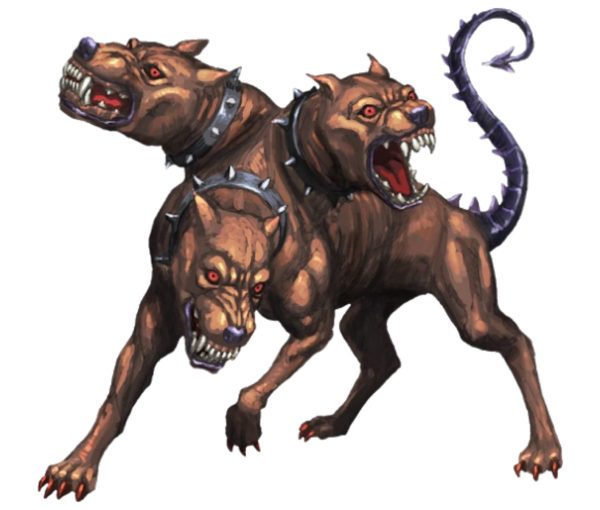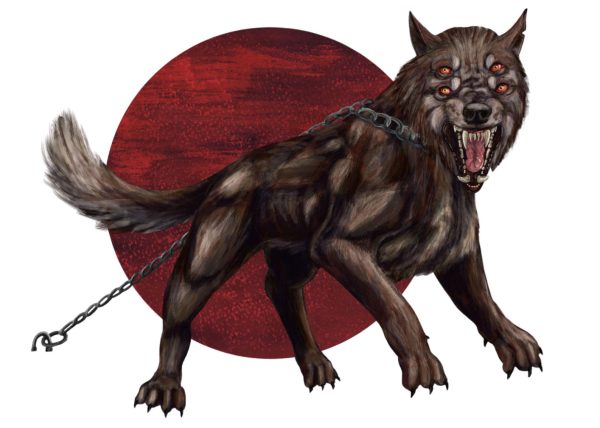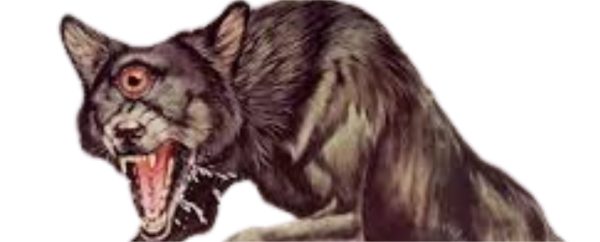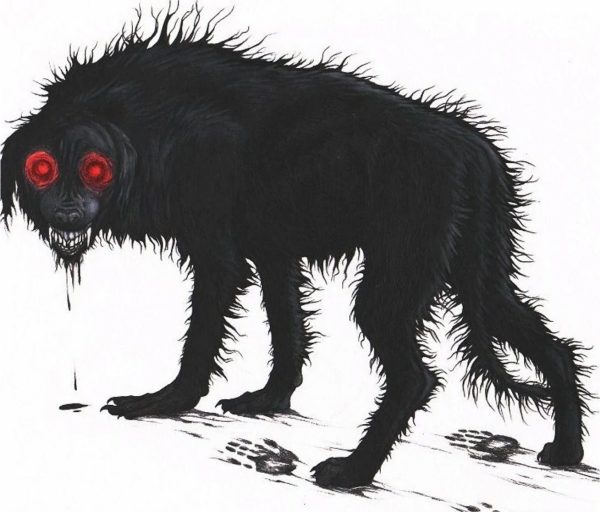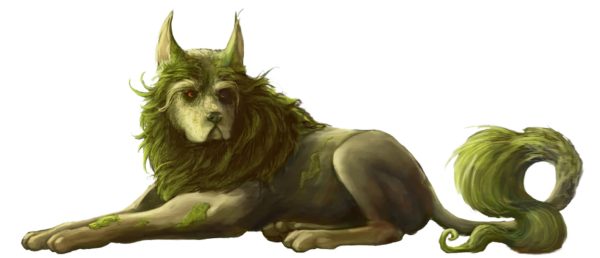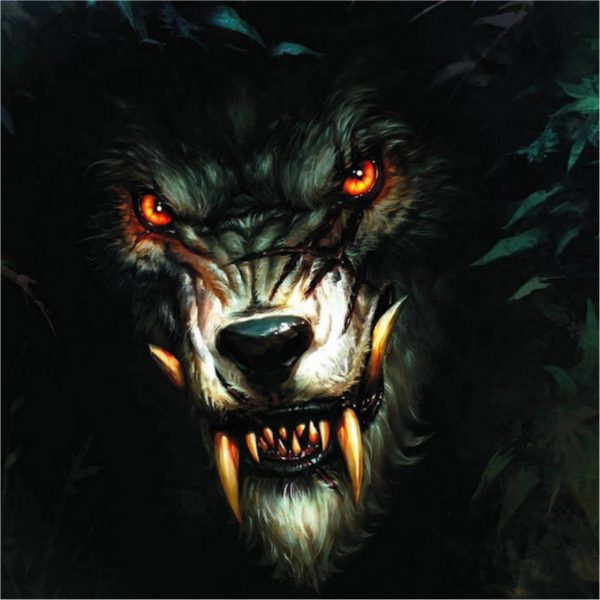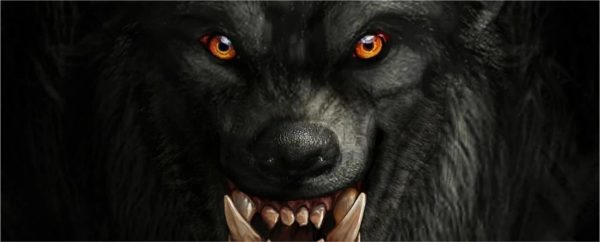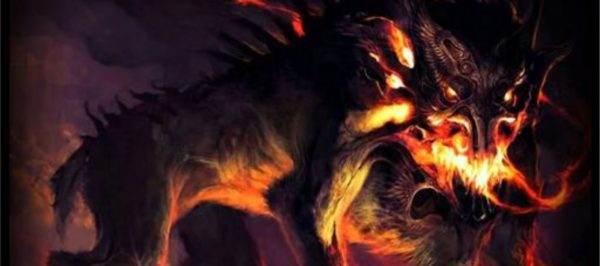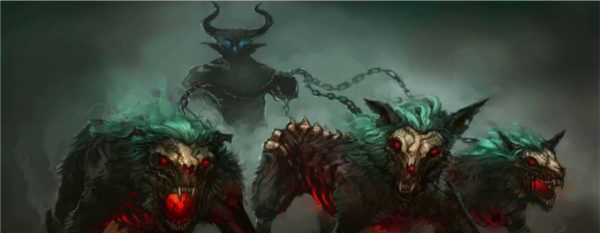The hellhound has always been a creature of interest for me and many others. Taking many different and equally mystical names and forms, it remains among the most visually appealing creatures in any mythology.
Many people have claimed to encounter it, and the number of references made to it in historical documentation is astounding. This raises the question, is the hellhound fact or fiction?
What Does Hellhound Mean?
The term "hellhound" collectively refers to a formidable and often ominous creature that appears in various mythologies and folklore. These supernatural dogs are said to have originated from different cultures and are associated with specific roles and characteristics.
In legends and folklore, hellhounds are often depicted as large, vicious black dogs that serve as guardians. They are believed to watch over places such as graveyards, churches, and even the gates of hell itself. Their imposing presence and fierce nature are meant to deter trespassers and protect sacred or forbidden areas.
The name "hellhound" also carries connotations of being a harbinger of bad news. According to some theories, encountering a hellhound is believed to foretell impending death or misfortune. Their appearance is seen as an ill omen, often associated with doom or tragedy.
However, it's important to note that not all beliefs surrounding hellhounds are negative. In certain interpretations, these creatures are viewed as spirit guides, helping individuals safely transition to the afterlife. In this context, they are seen as benevolent and supportive beings, assisting souls on their journey to the next realm.
To fully understand this creature whose form I would like to take over, I had to research and find out a lot about a black dog in many folklores and mythologies.
The five most Famous Hellhound Occurrences in Mythologies
I found five references in different mythologies in the quest to unmask this creature. Each differs from the last, but they are equally interesting to read. One exciting part of this research was discovering this beast's duties.
It is not enough to want to become the beast without understanding the character behind it, and this is the main reason why I had to grasp the concept of the hellhound.
The most famous references related to the hellhound include the following:
Cerberus from Greek mythology
Arguably the most famous, Cerberus has to be among the most exciting hellhounds. Cerberus is part and parcel of Greek mythology and is the personal pet of Hades, the underworld god. Given as a gift, Cerberus is part of a more prominent and vicious family.
This hellhound has multiple heads in Greek mythology, unique to Cerberus. The number of heads is a subject of dispute. Some say there are two heads, while others claim even more, usually three. However, the three heads are more commonly associated with paintings and other visual representations, understandably for the ease of capturing this beast on canvas. In other references, it is said to have at least fifty heads and, in others, a hundred more.
Cerberus guards the underworld's gates and prevents the dead souls from leaving their eternal prison. Besides keeping souls in, Cerberus keeps things out, preventing the living from gaining access to Hades' kingdom.
Others believe that Cerberus had snakes all over his back that account for the multiple heads, and one of these serpents accounts for its highly venomous tail that bit many heroes trying to gain entry or leave the underworld. This three-headed black dog is sometimes thought to be covered in fire and consequently has a foul odor.
Cerberus is intelligent, and outwitting it has been the subject of many an adventure. This has only ever significantly occurred, and even so, the heroes barely made it out with their lives.
Garmr from Norse Mythology
In Norse mythology, the name hellhound is associated with the hound of Hel. If this has any reference to Fenrir, vaguely understood as a dog and even sometimes as a wolf, it remains a mystery. Along with this mysterious cloak on Garmr is the complexity of its roles.
Fenrir actively participated in Ragnarok, fighting with gods, and is prophecied to be the end to another god, who will, in turn, kill it. Garmr is the guardian of hades and keeps souls on the inside where they belong.
Garmr was kept chained to the underworld entrance, and his lonesome howls are said to haunt the very pillars of the underworld.
According to prophecy, the war would erupt in the future, and Garmr would be right in the thick of it, fighting with the giants against the gods. It remains unclear what might have triggered the buried loath in Garmr for the gods.
Black Shuck from the Norfolk, Essex, and Suffolk Coastline
Sometimes referred to as the Ghost dog of Eastern England, Black Shuck is among the more ominous versions of hellhounds.
One extremely unique feature of Black Shuck is its cyclops nature. One eye on a dog is entirely unheard of, and the description of this single eye goes further to fan the flames of fear than envelope Black Shuck.
A red glowing eye, fixed right at the center of its ghastly head, meeting Black Shuck on a lonesome path is bound to leave anyone shaken to their core.
Fear, however, is only the beginning. Black Shuck is said to patrol lonely, poorly lit streets and the dim sections of the coastline, usually avoided by the town folk. Loud shrills of howling rent the air in the darkest hours of the night, and even though this is enough to make your blood run cold, Black Shuck's footsteps are light and inaudible.
Black Shuck was said to tell people when they would die, usually sooner than precedented, sometimes later on in the year. This was reason enough to deter people from approaching howling sounds, whether wolf, hound, or demon.
Records indicate that Black Shuck once invaded two churches in the 1500s and what ensued after was nothing short of a bloodbath. Right in the middle of mass, the church of the holy trinity was met by a different malevolent being. Tearing limb from limb, Black Shuck wreaked havoc on the locals before disappearing into thin air. What remains of this encounter is words of how a demonic black dog with a single glowing red eye, with a body the size of a mastiff, mauled several locals in the two churches.
The Black Dogs of English Folklore
A trip down to England reveals a whole new world of black dogs.
Some are ghostly hounds, while others are plain physical. There are many mentions of black dogs in different parts of the country, some of which have common characteristics while others couldn't be more different. Some even claim that there are shape-shifting black dogs, humans that take on a canine form. Now, how fun would that be?
There are stories of black dogs with a rider who is a huntsman. In others, this huntsman is said to be the devil, and the black dogs are his pets, working for him. In other tales, the black dog is considered a guardian, wherein in some places, mothers leave their toddlers unattended because they know the black dog will watch over them. Black dogs were also rumored to protect travelers on long, precarious journeys.
Some black dogs are said to be guardians, but not all are known for their kindness and consideration. Some are downright demonic, and being in the presence of one spelled imminent doom. These black dogs were famous for their viciousness and led to the loss of many lives.
Fearless and persistent, some of these dogs have very alluring characteristics. Imagine seeing a flaming dog the size of a horse dragging a metal chain behind it, heralding a storm. That, for me, after the initial shock and trauma, would be a sight to behold.
Tales of black dogs have been told in many legends from northern England to central America and Anglo-Saxon chronicles and Latin America.
The Fairy Hounds of Celtic Mythology
The Celts were known for their rich culture, and hellhounds are present in the form of fairy dogs in their folklore.
Like all fairies, these dogs are more spectral hounds than demonic. They have a deep intertwining relationship with the rest of the fairies, and these fairy hounds are paramount to the fairies. They, therefore, were treated with the utmost respect whenever they crossed paths with mortal humans.
In most accounts, the fairy hounds of the Celts differed from other places. Instead of the usual black coat on other hellhound-related black dogs, these had a white coat with a cherry red tinge on their ears. They were part of a wild hunt that took part in another land, in Annwn, a world ruled by a king, Arawn. Whether these Celtic hounds are related to the now-extinct breed of Celtic hounds is still unknown.
What are the Most Common Characteristics of Hellhounds?
Now that we have a basic understanding of the different black dogs in different cultures and geographical locations, it only seems right that we cover the typical characteristics of hellhounds.
I mean, you never know; how would you tell if you are in the presence of a hellhound?
Hellhound's Characteristics
In general, hellhounds share many common characteristics, regardless of their culture or country of origin.
Among the most notable are the following:
Hellhound's Size
If hell hounds were regular-sized dogs, they wouldn't be as scary. Most witnesses claiming to have encountered them range from the size of a large dog to that of a horse, and in cases like Cerberus, they are gigantic. Some are said to resemble a normal dogs, like a black poodle, while others are more like a rabid dog.
Hellhound's Color
Hellhounds attempt to instill as much fear as possible regarding color. They are often spotted in a completely black coat, except for the Celtic fairy hounds.
Hellhound's Facial features
The most significant part of their scary nature is derived from their facial features.
With yellow eyes and razor-sharp teeth, sometimes there is mention of a horn or horns and a red glowing appearance; they are completely gruesome creatures.
Hellhound's Abilities
Super strength and speed are the most common abilities associated with hell hounds.
Still, in addition to this, the ability to summon storms and predict deaths is also mentioned, although in scattered forms.
From their close association with hell, they have also been said to possess fire-based abilities, often lighting and scorching the ground they walk on, and some claim they breathe fire.
Hellhound's Odor
Hellhounds have been said to have a very pungent smell around them.
Some believe this is from burning sulfur, the fuel behind the flames on their skin. Being near hellhounds might make you choke on this foul odor.
Hellhound's Personalities and Abilities
In terms of personality, there is a lot to like about hellhounds, which is the primary source of my interest in them.
-
Hellhound's Loyalty.
Hellhounds are loyal to the demon or entity they serve. It is impossible for any other being to use them to fulfill their needs if this conflicts with their master's wishes.
-
Hellhound's Persistence.
Hellhounds in a hunt are relentless and unforgiving. For the quest to end, one of the participants must have met their demise; nothing matters, whether the prey or the hellhound itself.
-
Hellhound's Precognition.
These creatures require precognition to accomplish these tasks to tell you of your impending visit from the grim ripper or to protect you from danger in the offing.
-
Hellhound's Hellfire breathing.
These creatures can do a lot with their mouths and have the enviable ability.
Breathing fire and brimstone is another one of their many abilities.
In addition to these, they are also voracious creatures, going about their business with intense eagerness.
Also in their arsenal is a ferocity and tenacity not seen in any other earthly creature. They are brilliant and may occur in phantom or ghostly properties or physical form, which is as scary as the other.
What are the Weaknesses of Hellhounds?
From their abilities and appearances, it is hard to imagine if hell hounds have any weakness whatsoever, but like kryptonite, the man of steel, iron, silver, and salt is said to stop these creatures dead in their tracts.
Stories are also told of how a man once pursued by hell hounds knelt and prayed, and they changed their direction. Religion and faith can therefore be said to be effective against them.
Summary
The reason for your interest in these demonic creatures and not just any other monsters might be diverse, but the bottom line is that there is a lot to take home from them.
Ghost stories of hell hounds have been told for millennia and are guaranteed to sip through modern folklore for a long time in the foreseeable future.
Other than inspiring fear, they also inspire a lot of different emotions, and some of them could be the beginning of a lot of fun activities, a wild hunt of sorts.

